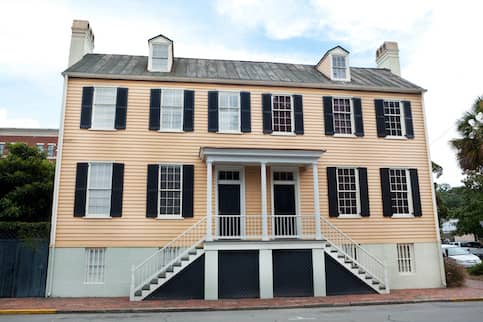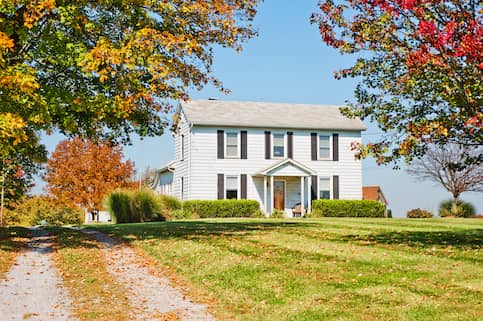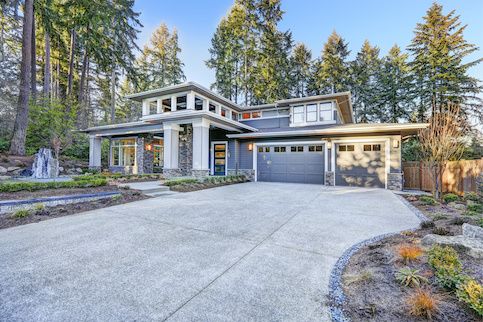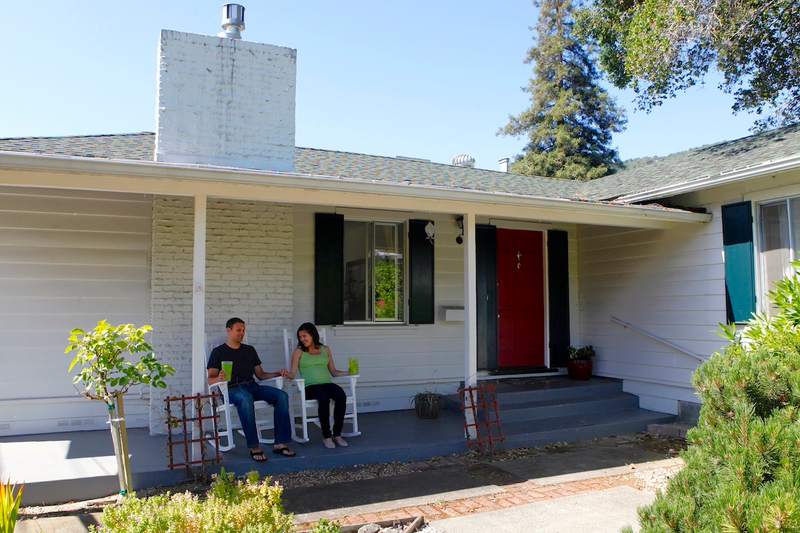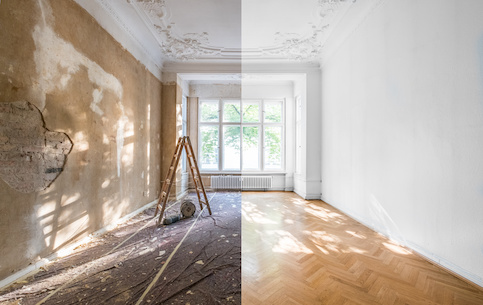The U.S. Department of Veterans Affairs offers mortgages to help qualified members of the military, veterans, and their eligible spouses buy, refinance or build a home. VA loans have no minimum down payment and flexible requirements, making them an attractive option for eligible borrowers.
Key Takeaways:
- VA mortgages are available only to eligible military service members, veterans, and their surviving spouses to buy, refinance and build homes.
- VA loans require no down payment or mortgage insurance, though they do require an upfront funding fee.
- Eligible borrowers need a certificate of eligibility to apply for VA loans, which are available through private lenders.
What Is A VA Loan And How Does It Work?
Veterans Affairs loans help people who serve or have served in the United States military buy, build or refinance a home.
The VA sets requirements for the loans, which are offered by private lenders. The VA guarantees partial repayment of the loan if the borrower defaults, making them less risky for lenders. That allows lenders to offer lower interest rates on VA loans than conventional loans.
Beyond the eligibility requirements, VA loans generally work like other mortgages, with borrowers free to choose between fixed and adjustable interest rates and 15- or 30-year loan terms.
Borrowers must pay closing costs, which typically total 2% to 5% of the purchase price. Specific to VA loans are a funding fee and a specialized VA appraisal fee. VA rules also limit lenders’ origination fee to no more than 1% of the loan amount. Sellers may contribute to closing costs – often known as seller concessions – and these fees are capped at 4% of the loan amount.
What’s Your Goal?
Buy A Home
Discover mortgage options that fit your unique financial needs.

Refinance
Refinance your mortgage to have more money for what matters.
Tap Into Equity
Use your home’s equity and unlock cash to achieve your goals.
Who Can Get A VA Loan?
VA loans are designed for members of the military and their families, so eligibility depends on your current or previous service or that of your spouse.
Certificate of Eligibility
You need a Certificate of Eligibility to get a VA mortgage. COEs are available to current and former members of the Army, Navy, Air Force, Marines, Space Force, National Guard or Reserve, and their eligible surviving spouses.
To get a COE, you or your spouse must meet minimum military service requirements.
In general, active-duty service members must serve at least 90 continuous days to qualify for a COE.
The minimum service requirement for veterans varies depending on when they served. For those who served since Aug. 2, 1990, the requirement is met if you served for:
- At least 24 continuous months.
- At least 90 days on active duty.
- At least 90 days if you were discharged for a hardship or reduction in force.
- Less than 90 days if you were discharged for a service-connected disability.
Veterans who served before that date generally need 90 days of active-duty service during wartime or 181 continuous days during peacetime. Exceptions exist for veterans who served less time but were discharged with a service-connected disability. You can see the requirements based on when you served at the VA website.
VA-eligible borrowers have full entitlement if they have never used their home loan benefit or have repaid a previous VA loan in full. Borrowers who have a remaining entitlement have limits on the amount they can borrow with a new VA loan. Borrowers have a remaining entitlement if:
- They are repaying a VA loan.
- They have repaid their VA loan and still own the home they bought with it.
- They refinanced a VA loan into another loan type and still own the home.
- They failed to fully repay a previous VA loan.
To get a COE, you must provide your discharge or separation documents if you’re a veteran or a statement of service if you’re on active duty.
Your lender can help you submit your documents to request your COE. You need a signed statement of service if you’re on active duty and your discharge documents if you are a veteran. You can request a COE by mail, or your lender can help you submit documents and apply for one.
Ready To Become A Homeowner?
Get matched with a lender that can help you find the right mortgage.
Types Of VA Loans
The VA offers a few different types of mortgages that you can use to buy, refinance, or improve a property.
Purchase Loans
There are two main VA loans you can use to buy a home.
VA Purchase Loan
The VA purchase loan offers benefits such as no down payment requirement or mortgage insurance. Since the VA guarantees these loans, lenders often can offer better terms. There’s no loan limit for borrowers with full entitlement. Borrowers with a remaining entitlement must meet the conforming loan limits.
Native American Direct Loans
Native American veterans or their spouses may qualify for a Native American Direct Loan. These loans are aimed specifically at eligible Native Americans with military service who want to buy, build or improve properties on federal trust land. The VA directly funds these loans, which usually have very low interest rates.
Refinance Loans
The VA offers two refinance loans.
VA Streamline Refinance
The VA offers streamline refinance loans – commonly known as interest rate reduction refinance loans or IRRRLs – to refinance an existing VA-backed home loan with minimal paperwork, though you still pay closing costs. You can use an IRRRL to reduce your monthly payment with a lower interest rate or to switch from an adjustable rate to a fixed-rate mortgage.
VA Cash-Out Refinance
A VA cash-out refinance loan is a new mortgage based on your home’s current value. You repay the original mortgage, keep the difference in cash, and repay it as part of your new loan. To be eligible, you must have a Certificate of Eligibility, meet the lender’s financial and credit-based requirements, and live in the home you’re refinancing. You can use this program to refinance non-VA loans with a VA-backed loan.
VA Energy Efficiency Mortgages
VA energy efficiency mortgages can help homeowners finance improvements to make their homes more efficient by adding solar panels, insulation or weatherproofing. EEMs are offered alongside purchase or refinance loans.
Loans of $3,000 or less require relatively little documentation. If you want to borrow more, you’ll need to show evidence that the increase in your mortgage cost will be offset by reductions in utility costs or that your home will see an appreciable increase in value.
VA Construction Loans
The VA also offers construction loans for people who want to build their own homes. Like other VA loans, it requires no down payment. As a bonus, you may not have to pay a funding fee.
To get this type of loan, you’ll have to work with a VA-approved builder and submit a complete set of plans for the project. Then, you must have the plans appraised to ensure the home will be worth enough to secure the loan.
Take The First Step To Buying A Home
Find a lender that will work with your unique financial situation.
VA Loan Requirements
The VA sets few specific financial requirements to qualify for its loans. Instead, individual lenders have their own requirements. Typically, these requirements are less strict than those for conventional mortgages, thanks to the insurance that the VA offers lenders.
VA loans also have specific property requirements to ensure the homes are safe and veterans pay a fair price.
VA Funding Fee
The VA funding fee is a one-time fee that borrowers pay the VA to finance its loan program.
The funding fee amount depends on the type of VA loan you get, your military status, the amount of your down payment when you purchase, and whether it’s your first VA loan.
Here’s how the VA funding fee is determined.
VA Funding Fee Rates For Purchase and Construction Loans
| VA Funding Fee Rates For Purchase and Construction Loans | Funding Fee Rate | |
|---|---|---|
| Less than 5% | 2.15% | |
| First Use | At least 5% | 1.5% |
| At least 10% | 1.25% | |
| After First Use | Less than 5% | 3.3% |
| At least 5% | 1.5% | |
| At least 10% | 1.25% |
Here’s how it applies to other loan types:
VA Funding Fee For Other Loan Types
| Loan Type | First Use | After First Use |
|---|---|---|
| Cash-Out Refinance | 2.15% | 3.3% |
| NADL Purchase | 1.25% | N/A |
| NADL Refinance | 0.5% | N/A |
| IRRL | 0.5% | N/A |
The VA funding fee is paid at closing or can be financed into the total cost of the loan.
Surviving spouses, veterans with disability honors, and active-duty personnel who have received a Purple Heart do not have to pay the funding fee.
Property Requirements
Any home bought with a VA loan must meet the agency’s minimum property requirements. A VA-approved appraiser will inspect the home to determine whether it meets the requirements, focusing on whether it is safe, structurally sound and reasonably priced.
No Minimum Credit Score Requirement
The VA does not have a specific credit score requirement, but your lender may. A lender’s typical minimum credit score is 580.
No Maximum DTI Ratio Required
No specific DTI ratio is required to qualify for a VA loan, and there are no minimum or maximum income requirements beyond a “satisfactory repayment ability.”
However, the VA’s suggested DTI ratio standards are slightly more specific. If you have a DTI ratio higher than 41%, the VA may look more closely into your application and ask for additional compensating factors to qualify you for the loan.
No Loan Limits
There are no specific VA loan limits, so it’s ultimately up to your lender to determine how much you can borrow.
Even though VA loans are non-conforming loans, many lenders require you to meet conforming loan limits. The baseline conforming loan limit for 2025 is $806,500 for a one-unit property in most areas and $1,209,750 in high-cost counties. If buyers have a reduced entitlement, they may be subject to conforming loan limits.
Pros And Cons Of VA Loans
It’s important to consider VA loan benefits and drawbacks before you commit.
Va Loan Pros and Cons
| Pros | Cons |
|---|---|
| No down payment required. | Must have served in the military or have a military spouse to be eligible. |
| No mortgage insurance payments. | No down payment means you have less equity to start. |
| Interest rates are typically lower. | VA home appraisals and requirements can be strict. |
| Cap on origination fees. | All VA loans require you to pay a funding fee. |
6 Steps To Getting A VA Home Loan
If you’re ready to get a VA loan, follow these steps.
1. Find A Lender That Offers VA Loans
While VA loans are backed by the federal government, you still get one through a private mortgage lender. Check with lenders in your area to see if they offer VA loans.
2. Secure Your COE
Once you find a lender, your COE verifies your military service and your ability to get a VA loan. If you don’t meet the qualifying criteria, you should talk to your lender about other options, such as a conventional loan.
3. Get Mortgage Preapproval
It is best to get VA loan preapproval before starting your home search. Getting a preapproval letter gives you an idea of how much you can borrow and shows agents and sellers you’re ready to buy.
4. Find A Home And Make An Offer
Once you find a home that meets VA guidelines, it’s time to make an offer. Work with your real estate agent to make a competitive offer you can afford.
5. Get A VA Home Appraisal
A VA home appraisal is required for all VA loans to assess the home’s fair market value and ensure it’s safe to live in. An appraiser looks at your home’s basic structure and ensures it meets the VA’s requirements.
6. Close On The House
At closing, you’ll sign mortgage documents, and your lender will explain the terms and requirements of your loan, including how to make monthly payments to your lender. While you may not have to provide a down payment for a VA loan, you’ll still pay closing costs that usually total 2% to 5% of the purchase price. Make sure to budget for these expenditures and prepare to wire the money or provide a check at closing.
FAQ
Here are answers to common questions about VA loans.
What is the minimum credit score required for a VA loan?
The VA has no specific credit score requirements, but your lender may have one. Lenders typically require a credit score of at least 580 for a VA loan.
Is it difficult to get a VA loan?
If you meet the eligibility requirements, qualifying for a VA loan is relatively easy. While there are additional paperwork and property requirements compared with conventional loans, these extra steps can be worth it to get a better deal.
Can you use a VA loan more than once?
Yes. If you sell your home and pay off the mortgage in full, your entitlement to a VA loan is restored, and you can apply for another VA loan. There are also certain circumstances, such as receiving permanent change of station orders, in which you can hold two VA loans simultaneously. If you have a VA loan and wish to take out another, you may have limits on how much you can borrow.
The Bottom Line
VA loans are one of the perks of military service. If you qualify, you can buy a home with no down payment, no mortgage insurance, a lower interest rate, and flexible financing standards. With this assistance, those who serve their country can more easily achieve the American dream of homeownership.
More From Quicken Loans:
Patrick Russo contributed to the reporting of this article.

T.J. Porter
T.J. Porter is a Boston-based writer who focuses on credit cards, credit and bank accounts. When he's not writing about all things personal finance, he enjoys cooking, esports, soccer, hockey, and games of the video and board varieties.





